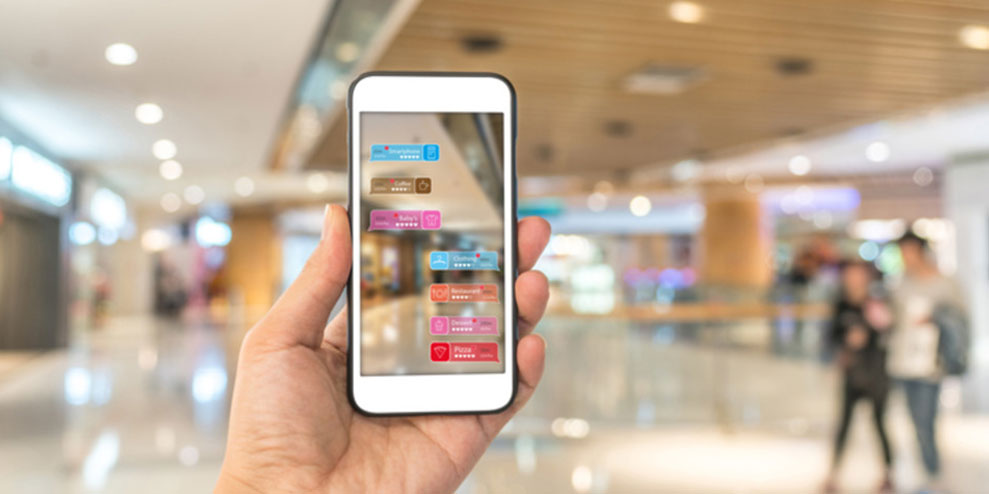Brands will gradually shift towards augmented experience as a way of reaching consumers, as more industries such as fitness, beauty and retail begin investing in AR, VR and voice-assisted tools for their advertising campaigns.
Investment in augmented reality (AR) advertising is beginning to boom, with the global market expected to grow over 30% each year to 2023.
As technology evolves to support this emerging format, AR is set to become a standard part of the advertiser toolkit, largely due to the unique personalized experience it offers.
It is far more accessible than other technologies such as virtual reality (VR), which require the user to wear a specific headset to fully appreciate the experience.
AR works on a regular mobile phone, using native functionality such as the smartphone camera to superimpose 3D assets onto the user’s immediate surroundings.
While it has a certain novelty value, with ads currently seen as fun tools consumers can use to interact with the brand, the entertainment element is only half of the story.
AR a lot more than a ‘fun tool’
The utility and practicality of the format will guarantee its sustainability, with users able to manipulate and interact with a digital version of a product before buying it.
This interaction fully immerses the user in the brand and its products, helping them retain product information and engage with an ad.
But the real value of AR can be seen is in its ability to deliver personalizsed experiences, allowing advertisers to speak to users on a direct level.
The opportunity of personalization is enhanced further because AR places people in a virtual and controlled advertising environment, responding to each users’ unique surroundings, and leading to higher user engagement through bespoke ad messaging.
Whether the consumer is using the front facing camera to test out virtual make up products and accessories on a digital version of their own face, or using the rear facing camera to place items of furniture in their own living room to see how they look, AR allows them to view a computer-generated representation of a brands’ product in their personal space.
Effective personalization is key to audience engagement, creating an emotional connection with the user, and AR provides the perfect environment for a unique customer journey.
Social platforms are already making their mark on the AR advertising landscape
The all-new BMW X2 in the Snapchat Augmented Trail Lens. (11/2017)
Snapchat is leading the way with AR technology that encourages users to have fun with selfies and group photos by using filters that also enable brands to promote their products.
It released an affordable programmatic AR ad unit last year and BMW was the first brand to try it, enabling users to walk around a 3D version of the X2 model as if they were in a car showroom.
Advances in the technology and its advertising product are cited as two of the reasons Snapchat stock is up 183% this year.
Facebook is also getting in on the act, first placing ads in Messenger, then into its newsfeed.
Michael Kors was the first brand to test out newsfeed ads, allowing users to virtually try on its sunglasses to see how they looked before they made a purchase.
Other brands such as NYX Professional Makeup, Bobbi Brown, and Wayfair all followed suit.
Credit: Michael Kors / The Outcast agency
Companies investing in immersive and interactive campaigns
Outside of the social networks, other companies are also testing out immersive and interactive AR campaigns.
ASOS recently launched “virtual catwalk”, an AR feature that allows users to point their phone camera at a flat surface and see a 3D model in their own home or surroundings.
This creates a more intimate buying experience for shoppers, allowing users to view clothing in more detail before buying.
Beauty brand L’Oréal is adopting AR in a major way after acquiring AR company Modiface.
The technology allows users to virtually try make up products such as lipstick on their own faces to understand how it will look before they make a purchase.
L’Oréal is working on extending AR functionality to work with foundation products and hair color, and reveals the tech can double engagement time and triple conversion rates when added to a website or app.
As technology continues to evolve, and the rollout of 5G improves connectivity, AR will become a mainstream element of mobile advertising.
While it is fun to use and has a practical application in letting users try before they buy, its main benefit is creating an immersive, personalized experience, where a brand’s products are virtually placed into a user’s own unique space creating an emotional one-to-one connection.
–
This article first appeared in www.clickz.com
Seeking to build and grow your brand using the force of consumer insight, strategic foresight, creative disruption and technology prowess? Talk to us at +9714 3867728 or mail: info@groupisd.com or visit www.groupisd.com







